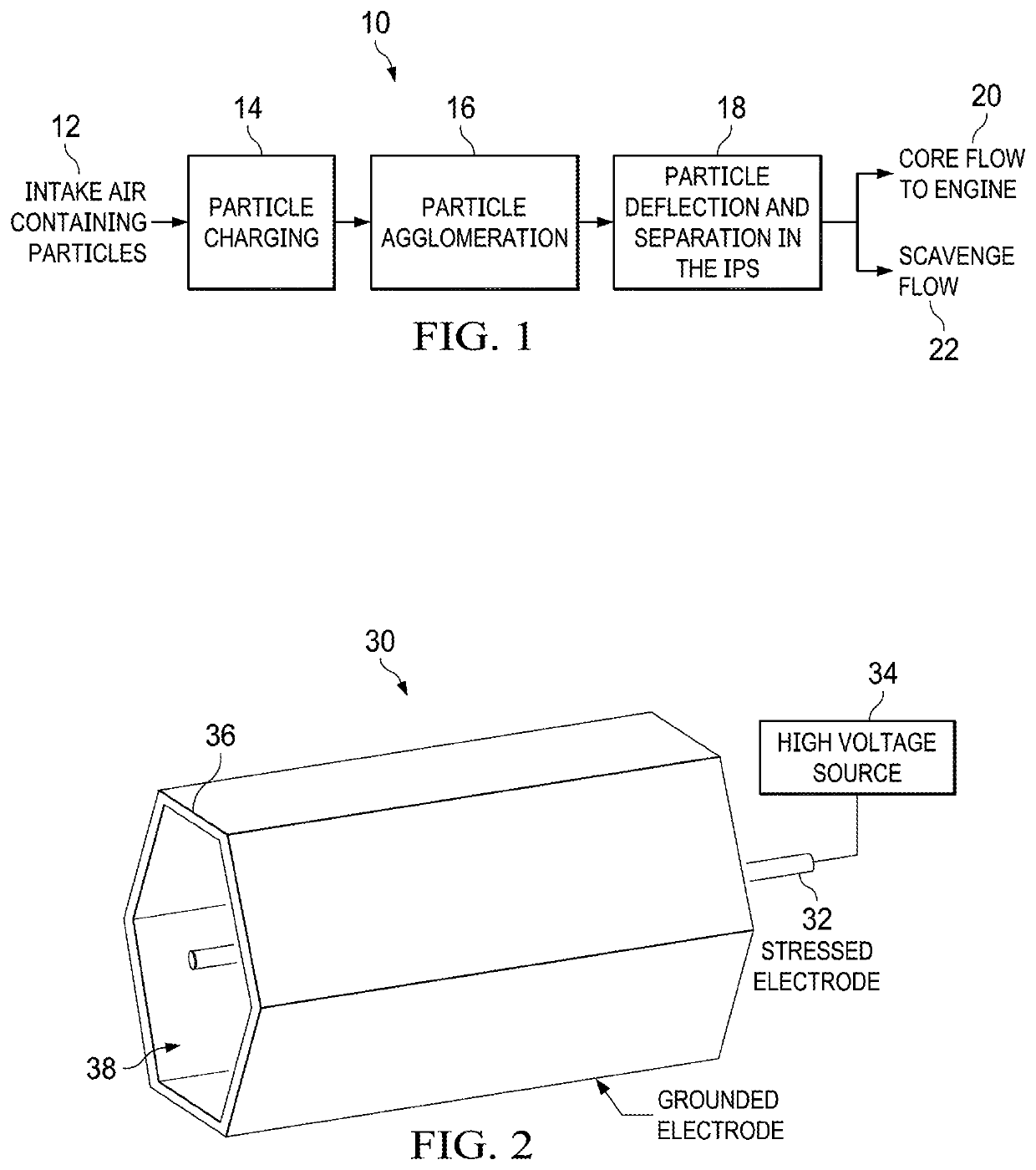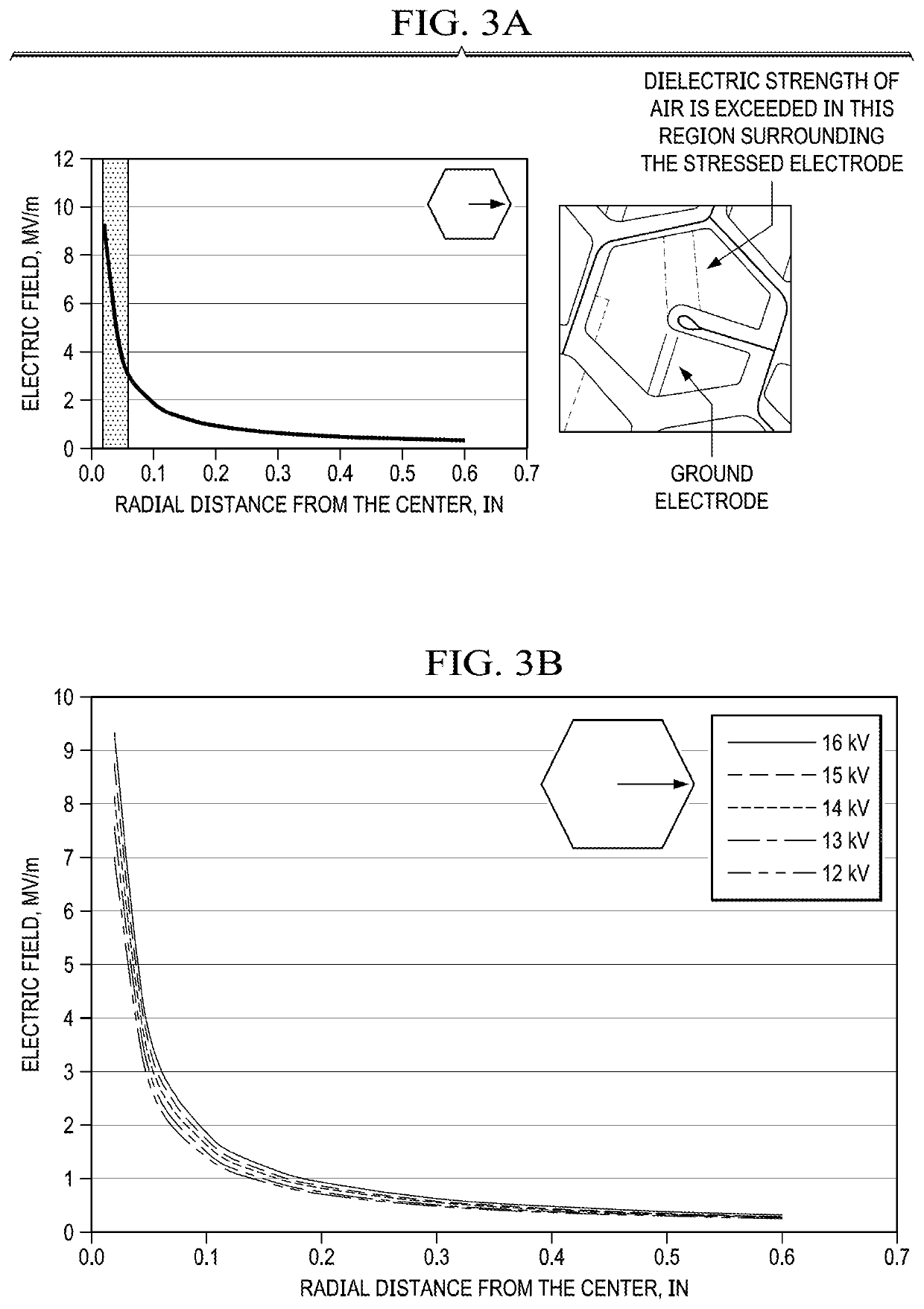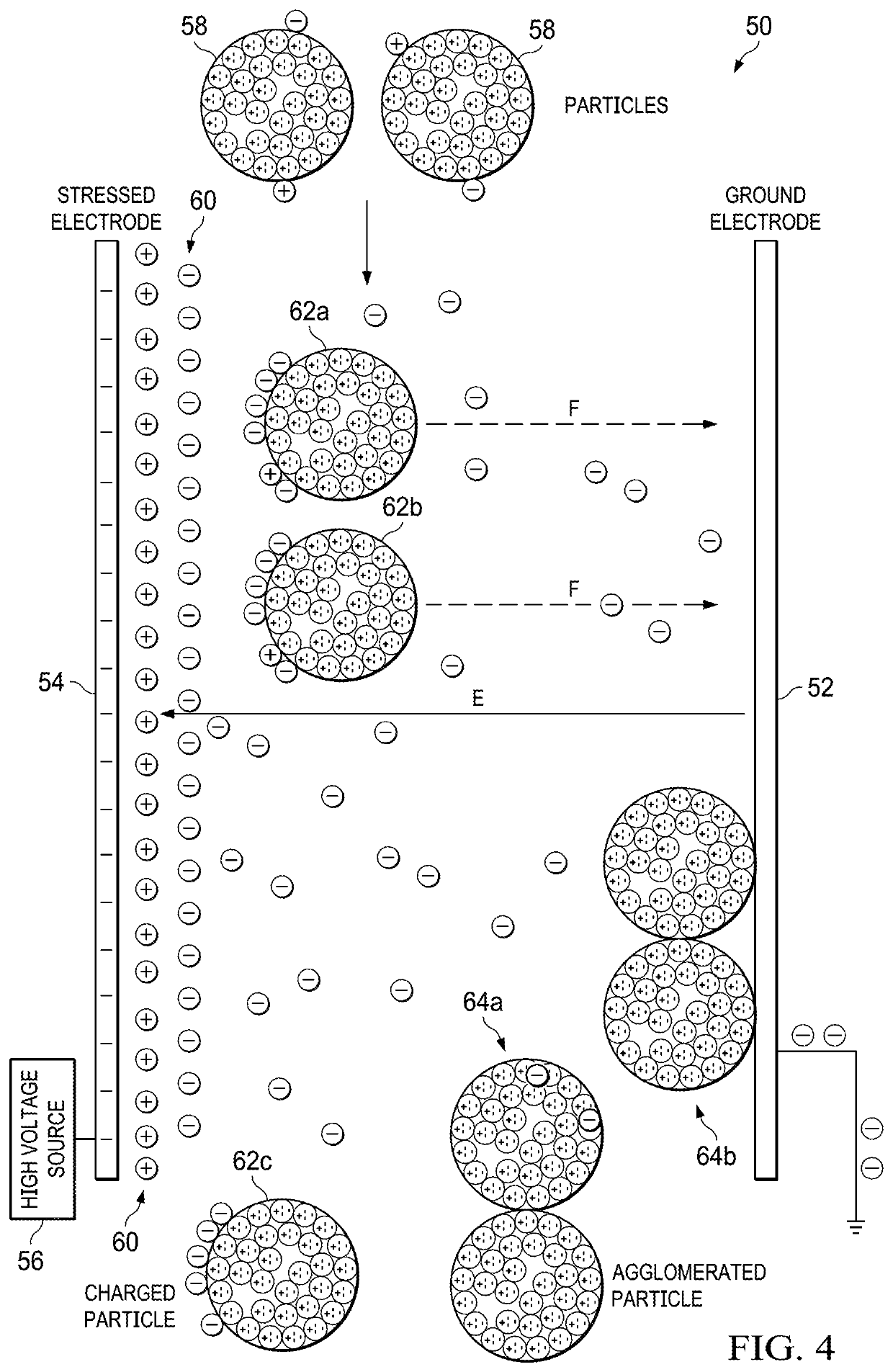Electrostatic enhancement of inlet particle separators for engines
a technology of electrostatic enhancement and engine, which is applied in the direction of magnetic separation, vapor flow control, chemistry apparatus and processes, etc., can solve the problems of blades and blockages, excessive air flow for combustion of fuel, erosion of turbine engine components, etc., and achieves reduced material required to build them and the total weight, less weight, and greater open surface area
- Summary
- Abstract
- Description
- Claims
- Application Information
AI Technical Summary
Benefits of technology
Problems solved by technology
Method used
Image
Examples
example 1
[0097]In laboratory testing, a bundle of six charger tubes with a circular cross-section (Φ1″×6″ long), a 3″ long agglomeration field (Φ3″×Φ1.325″ similar to FIG. 7), and a 1.2″ long deflection field was used with a scaled-down version ( 1 / 18th) of a full-scale IPS (rated for 14 lb / s turboshaft engine) to demonstrate improvement in separation efficiency. Dust laden air is flown through the charger tubes, agglomeration and deflection field, and the IPS. Within the IPS, the intake flow is split between the core flow and scavenge flow paths and the respective flows enter the core and scavenge filters. The core and scavenge flows were maintained at 400 SCFM and 80 SCFM, respectively. The average dust concentration in the intake air was 49-67 mg / m3. The test duration was 30 min. The dust in the air flow is captured using filter elements with fine pore size (0.03 um or 1 um). The IPS separation efficiency is calculated as:
[(Dust injected into airflow−Dust captured by core filter) / Dust inj...
example 2
[0101]In similar laboratory testing, a Particle Charging Stage 1 containing seven charger tubes of hexagonal cross-section and an Agglomeration Stage 2 and Deflection Stage 3 was used with a scaled-down version of the full-scale IPS mentioned above. The hexagonal tube (0.612″ side×6″ length) was grounded while the 0.039″ diameter rod was used as the high potential electrode. FIG. 13 shows discharge formation in Particle Charging Stage 1 consisting of a bundle of seven chargers tubes 320 of hexagonal cross-section, and the rods used as the high potential electrodes 322. The Agglomeration Stage 2 (Φ3″×Φ1.325″ similar to FIG. 7) was 6″ long and the Deflection Stage 3 was 1.2″ long. In these tests the concentration of dust in the intake air flow was varied from 27 mg / m3 to 54 mg / m3. The core and scavenge flows were maintained at 400 SCFM and 80 SCFM, respectively. The test duration was 30 min. All tests were conducted with the Particle Charging Stage 1 charger tubes operated in a negati...
PUM
 Login to View More
Login to View More Abstract
Description
Claims
Application Information
 Login to View More
Login to View More - R&D
- Intellectual Property
- Life Sciences
- Materials
- Tech Scout
- Unparalleled Data Quality
- Higher Quality Content
- 60% Fewer Hallucinations
Browse by: Latest US Patents, China's latest patents, Technical Efficacy Thesaurus, Application Domain, Technology Topic, Popular Technical Reports.
© 2025 PatSnap. All rights reserved.Legal|Privacy policy|Modern Slavery Act Transparency Statement|Sitemap|About US| Contact US: help@patsnap.com



